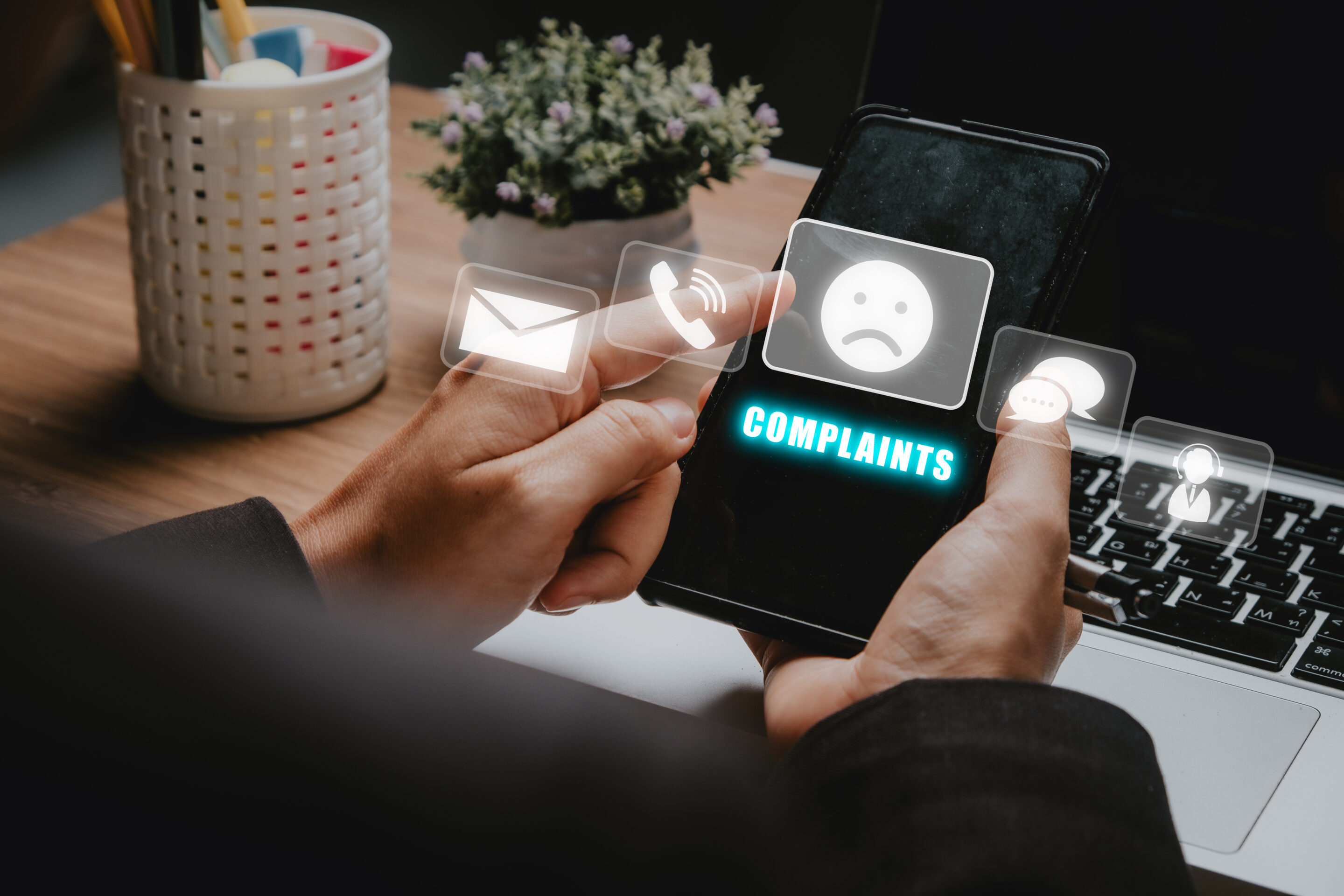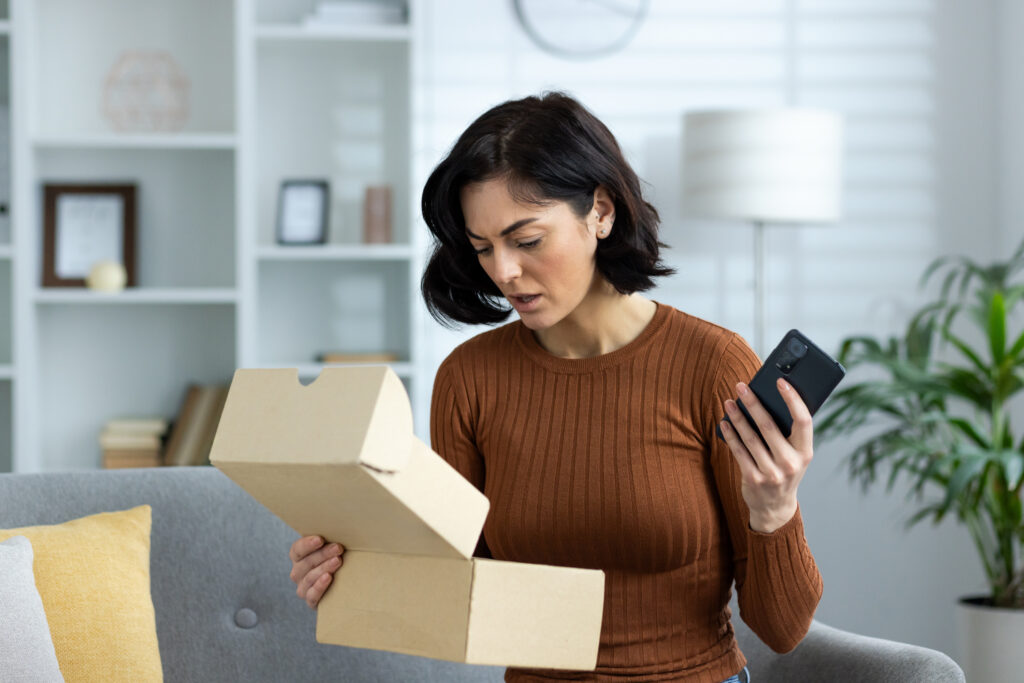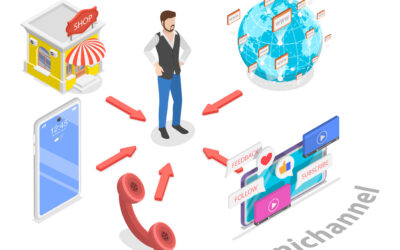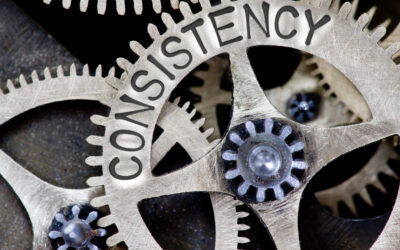“Customers are your purest form of quality control. Without their approval, your business doesn’t grow and succeed. So, when customer complaints roll in, it’s important to hear them out because these are opportunities to improve the customer experience.” – Clint Fontanella.
Retail customer complaints are inevitable; understanding them can help your business improve service and product offerings improving customer satisfaction.
When retailers acknowledge and resolve retail customer complaints in ways that satisfy customer expectations, the result is repeat business, increased sales and positive word-of-mouth advertising.
In this article, we discuss the top five retail customer complaints and offer tips and solutions for addressing and resolving them before they impact your business’s reputation.
What is A Customer Complaint in Retail?
In retail, a customer complaint occurs when a retail outlet does not deliver on its commitment or does not meet customer expectations regarding products or services.
Customer expectations are the result of comparisons made between interactions with businesses that offer similar products and services.
Why Are Customer Complaints Valuable to Retailers?
Customer complaints should be viewed by retail leaders as the most honest form of constructive feedback.
For example, when a customer complains, a business can use the shopper’s impute to identify operational gaps in service and improve upon them.
Further, management can gain a better understanding of how shoppers perceive product offerings, customer service, or business processes.
“A Salesforce report found that 83% of customers expect to interact with someone immediately when they contact a company.” – Karen Salamone.
What Are the Top Five Most Common Retail Customer Complaints?
Complaint #1: Long Wait Times
In general, retail customers expect a quick and seamless shopping experience when they shop. Thus, when lines and waiting times are longer than usual, feelings of annoyance and frustration emerge.
A survey study by Waitwhile found that Americans spend roughly 37 billion hours each year waiting in line. Many customers complain that waiting in line is a “timeless form of torture.”
Customers find themselves waiting when demand for retail goods overwhelms the store’s service capacity or because of a weakness in a business process.
For example, the customer checkout system may need to be updated to handle changing customer circumstances or expectations.
These long wait times can result in negative perceptions of the business, driving customers to leave before completing their purchases.
Complaint #2: Impersonal Shopping Experience
An impersonal shopping experience occurs when people feel they are just a number rather than a valued customer.
In the digital era, customers expect a customized experience that meets their individual preferences and is delivered seamlessly.
Poor customer experiences happen when retailers fail to use consumer data to personalize shopper interactions, or when services become generic and detached.
A Zendesk report states that roughly 50% of customers switch to a competitor after just one bad support experience.
Complaint #3: Inefficient Transition Between Online and Offline Service
Inefficiency in online and offline transition frustrates customers who expect a seamless experience between digital and physical shopping.
Zendesk’s annual Trends Report for 2024 notes that 62% of customers believe experiences should flow naturally between both physical and digital spaces.
In many instances, the transition issue becomes problematic when retailers are not able synchronize their online and in-store operations, leading to long waits for services such as curbside pickup or in-store collection.
Customers posting these complaints often feel their time is wasted, diminishing their satisfaction and trust in the retailer.
Complaint #4: Limited Communication Options
A survey study by TCN found that 40% of consumers cited “multiple options for communicating” as the most important feature of a company’s customer service function.
A lack of communication options frustrates customers who want multiple ways to contact and interact with a retailer.
Communicating with a retailer becomes an issue when stores only offer limited or outdated communication channels, ignoring the preference for virtual or omnichannel support.
The result is increased customer frustration and a sense of being ignored, which leading to negative reviews and decreased loyalty.
Complaint #5: Poor Product Layouts or Limited Product Availability
Product layout and availability are issues that can impact customer behavior in many ways. For instance, it can influence how long customers stay in your store, how much they buy, how satisfied they are, and how likely they are to return.
Poor product layouts and limited product availability make it difficult for customers to find what they need, leading to a frustrating shopping experience. These are issues that arise when retail stores are not well-organized or fail to manage stock levels of popular items.
The result is a decrease in customer satisfaction, as shoppers may leave without making a purchase and feel less inclined to return to a store that doesn’t meet their needs efficiently.
How Can Retailers Solve These Customer Complaints?
Long Wait Times
- Implement Queue Management Systems: Utilize virtual queue systems that allow customers to join a queue remotely and receive updates on their wait time, reducing in-store congestion.
- Hire Additional Staff During Peak Hours: Analyze customer flow data to identify peak times and ensure enough staff are scheduled to handle the increased demand.
- Optimize Checkout Processes: Streamline the checkout process by introducing mobile point-of-sale (P.O.S.) systems and offering multiple payment options such as digital wallets and self-checkout kiosks.
Impersonal Shopping Experience
- Personalize Using Customer Data: Implement customer relationship management (CRM) systems to track customer preferences and purchase history, enabling personalized recommendations and tailored promotions.
- Train Employees in Customer Engagement: Provide training for employees on how to engage with customers in a more personal and attentive manner, focusing on active listening and personalized service.
- Implement Loyalty Rewards Programs: Develop and promote loyalty programs that reward customers for their repeat business, offering personalized deals and incentives based on their shopping habits.
Inefficiency in the Online to Offline Transition
- Integrate Online and Offline Systems: Ensure that online inventory and order management systems are synchronized with in-store operations to provide real-time updates and accurate stock levels.
- Offer Scheduled Pickup Times: Allow customers to schedule specific times for curbside pickup or in-store collection to reduce waiting times and smooth transitions.
- Improve Staff Coordination: Train staff to handle online and in-store orders efficiently and equip them with the tools necessary to locate and prepare items for pickup quickly.
Limited Communication Options
- Expand Communication Channels: Provide multiple communication options, including live chat, social media messaging, email, and phone support, to cater to different customer preferences.
- Implement Bi-Directional Communication Tools: Use customer service software that enables two-way communication, allowing customers to reach out and receive real-time responses from staff.
- Regularly Update F.A.Q. and Self-Service Resources: Maintain an up-to-date knowledge base, F.A.Q. Section and community forums to help customers find answers to common questions without contacting support.
Poor Product Layouts or Lack of Availability of Key Products
- Redesign Store Layouts: Arrange products in a clear, logical flow with prominent signage to guide customers through the store, ensuring that popular items are easily accessible.
- Use Inventory Management Systems: Implement advanced inventory management systems to monitor stock levels in real-time and automate reordering processes to prevent stockouts of key products.
- Provide In-Store Navigation Aids: Offer digital tools such as store maps or mobile apps with navigation features to help customers locate products quickly and efficiently.
Handle Customer Complaints Using L.E.A.R.N. Principles
Train sales associates in the use of the L.E.A.R.N. model of customer service to help them think on their feet:
L — Listen to your customers so they feel heard. Don’t interrupt them.
E — Empathize with the customer. Put yourself in their shoes. How would you feel?
A — Ask customers what outcome they would like to see.
R — Reassure customers that the necessary steps will be taken to resolve the issue.
N — Never forget to follow up with the customer about the outcome and thank them.
“Customer complaint resolution is the process of receiving negative feedback, investigating the cause of the issue, and resolving the problem — all while communicating to the customer in a way that makes them feel heard.” – Clint Fontanella.
Final Comments
Customer complaints are an uncomfortable reality of the retail industry. However, complaints can be a good opportunity to improve products, services or operations.
Retail businesses that implement customized solutions to common customer complaints such as long wait times, impersonal service, and poor product layouts, can significantly enhance the shopping experience.
Continuous improvement in customer communication and the integration of online and offline operations are important for maintaining customer loyalty.
Taking these steps not only resolves current complaints but also positions the retailer for sustainable success in a competitive market.
Thank you for reading our article!
TimeWellScheduled is secure online time and attendance software 100% tailored to meet your scheduling needs! Our cloud-based scheduling solution optimizes employee attendance tracking, simplifies payroll administration, and enhances staff management capabilities. Plus, our service is free for up to 10 employees!
Click here to download our (Excel) employee scheduling template; It’s FREE!






